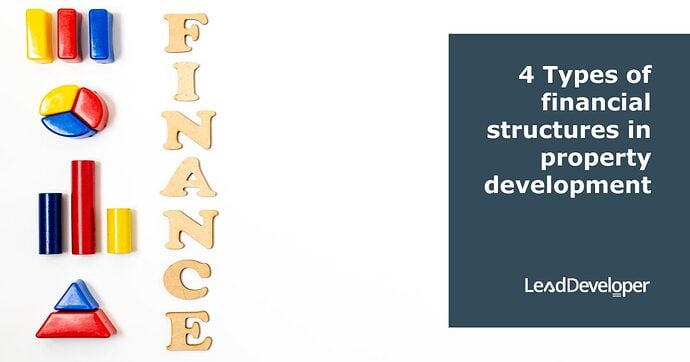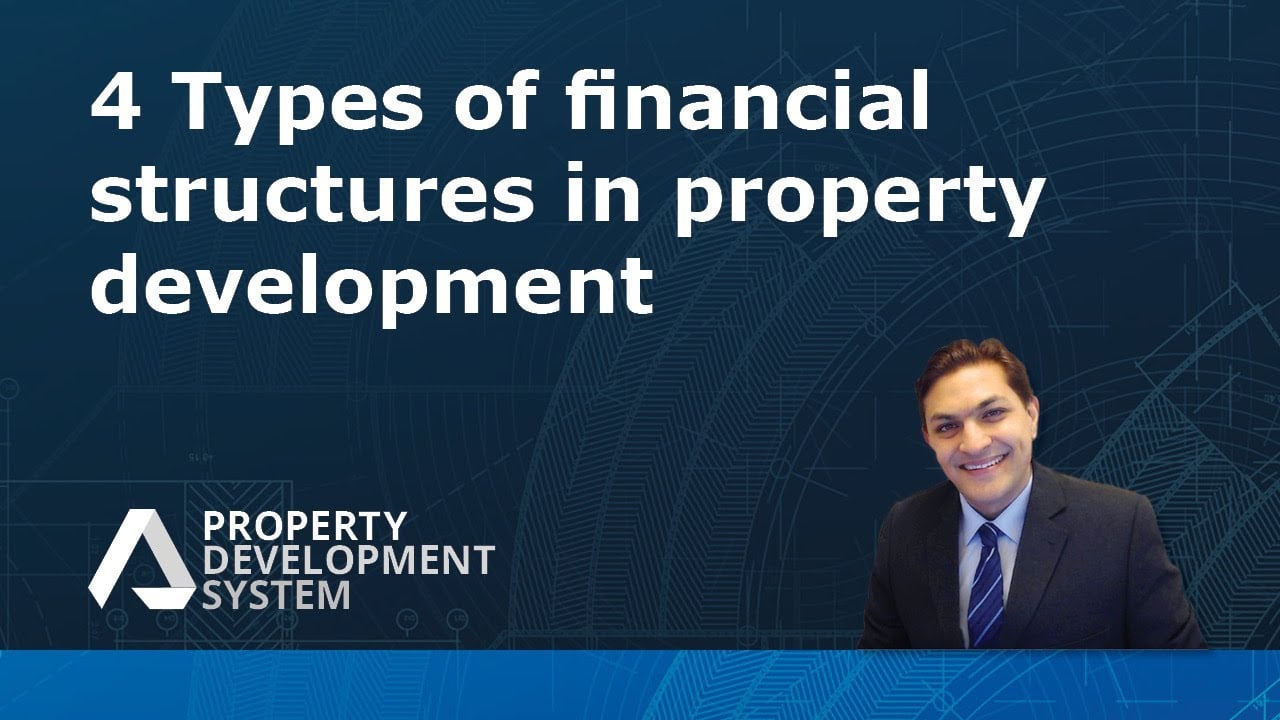Four Types of Financial Structures
Four Types of Financial Structures
Here, you will learn about the foundational investment strategies in real estate. It elucidates the nuances of choosing between individual, partnership, company, and trust structures, underlining the significance of personalised financial advice.
Investment Structures
Identifies four primary types: individuals, partnerships, companies, and trusts.
Advice
Stresses the importance of consulting an accountant to choose the best structure for your scenario.
Resource
In the above video you will find a website as a comprehensive source for understanding different financial structures, including case studies and considerations for individuals, partnerships, and companies.
Asset Protection & Taxes
Highlights tools for comparing structures based on asset protection and tax implications, especially regarding capital gains tax distribution among investors.
Frequently Asked Questions
What are the key differences between using a company and a trust for property development?
A company structure offers limited liability, potentially protecting personal assets from business risks, while a trust, particularly a discretionary trust, provides flexibility in distributing income to minimize tax obligations.
The choice between these structures affects how profits are taxed and how assets are protected against claims, making it crucial to seek tailored advice from a financial professional to match one’s specific situation and objectives.
How does the choice of financial structure impact capital gains tax distribution?
In a unit trust structure, CGT is typically paid by all unit holders in proportion to their investment. This contrasts with individual or partnership structures, where CGT liabilities and benefits, such as discounts, can be directly applied to the investors.
This distinction is crucial in scenarios involving multiple investors, as it directly affects each investor’s tax obligations and potential benefits from CGT discounts, making an informed choice of structure vital for tax efficiency.
Can losses be distributed across all types of financial structures?
Losses can be distributed to investors only in individual or partnership financial structures. In contrast, structures such as companies and various types of trusts do not allow for the distribution of losses among investors. This detail is particularly important for those considering their investment structure’s impact on tax liabilities and financial planning.
It highlights the need for strategic decision-making based on the specific financial goals and tax implications associated with each type of investment structure.
What are the foundational investment strategies in real estate?
The foundational investment strategies in real estate revolve around selecting the most appropriate investment structure to optimise your financial outcomes. These structures include individuals, partnerships, companies, and trusts. Choosing the right one is crucial for asset protection, tax efficiency, and overall investment success.
What types of investment structures are available for real estate investors?
There are four primary types of investment structures available for real estate investors:
- Individuals: Investing as a single entity or person.
- Partnerships: Two or more individuals or entities join forces to invest together.
- Companies: A legal entity separate from its shareholders invests in real estate.
- Trusts: A trustee holds property on behalf of beneficiaries according to the terms of the trust.
Why is personalised financial advice important when choosing an investment structure?
Personalised financial advice is crucial because it considers your unique financial situation, investment goals, and risk tolerance. An accountant or financial advisor can help you choose the best structure for your scenario, optimising your investment for tax efficiency, asset protection, and growth potential.
How can an accountant help you choose the right investment structure?
An accountant can provide valuable insights into the pros and cons of each investment structure, considering your financial situation and goals. They can help you understand the tax implications, legal liabilities, and asset protection each structure offers, ensuring you make an informed decision that aligns with your investment strategy.
What resources are available to understand different financial structures in real estate?
Comprehensive resources are available, including websites with videos, case studies, and detailed considerations for individuals, partnerships, and companies looking to invest in real estate. These resources can provide you with a deeper understanding of each structure, helping you to compare and contrast their benefits and drawbacks.
How do different financial structures compare in terms of asset protection and taxes?
Different financial structures offer varying levels of asset protection and have other tax implications, especially concerning capital gains tax distribution among investors. Tools and resources highlight these differences, allowing investors to compare structures based on how they can protect assets from potential liabilities and optimise tax outcomes.
Test Your Knowledge
Multiple Choice Questions on Real Estate Investment Structures
1. What is a fundamental purpose of selecting a specific investment structure in real estate?
A) To comply with international real estate laws
B) To align with the market trends in property development
C) To optimize financial outcomes such as tax efficiency and asset protection
D) To facilitate easier transactions in real estate markets
2. How does a company structure differ from a trust in terms of asset protection and tax for property development?
A) A company structure allows for direct profit sharing among investors.
B) A trust structure emphasizes on public investments and crowd funding.
C) A company offers limited liability, protecting personal assets, whereas a trust provides flexibility in income distribution for tax minimization.
D) A trust guarantees no tax obligations for investors.
3. Why is consulting an accountant recommended when choosing an investment structure?
A) Accountants can provide access to exclusive real estate deals.
B) They can offer personalized advice based on financial situations and goals, ensuring the choice aligns with tax implications and asset protection.
C) Accountants are legally required for all real estate transactions.
D) They can automate the investment process using advanced software.
4. In which structure is Capital Gains Tax (CGT) distribution affected by the proportion of investment?
A) Sole proprietorship
B) Unit trust structure
C) Non-profit organizations
D) Informal partnerships
5. Can losses be distributed to investors in all types of financial structures?
A) Yes, in all structures uniformly
B) No, only in individual or partnership structures
C) Yes, but only within companies
D) No, losses are retained within the investment and cannot be distributed
6. What are the primary types of investment structures available for real estate investors?
A) Bonds, stocks, funds, and syndicates
B) Individuals, partnerships, companies, and trusts
C) Commercial, residential, industrial, and mixed-use developments
D) Fixed-rate mortgages, adjustable-rate mortgages, and bridging loans
7. What role does personalized financial advice play in selecting an investment structure?
A) Ensures the fastest growth of capital
B) It considers the unique financial situation, investment goals, and risk tolerance, optimizing for tax efficiency and asset protection
C) It guarantees a fixed return on investment
D) Minimizes the need for legal compliance and paperwork
8. How can an accountant assist in choosing the right investment structure?
A) By predicting the future market values of properties
B) Providing insights into the pros and cons of each structure based on one’s financial goals and tax implications
C) Offering legal advice on property laws
D) Simplifying the construction and development process
9. Which resources are mentioned as helpful for understanding different financial structures in real estate?
A) Online forums and social media groups
B) Websites with videos, case studies, and detailed considerations for different structures
C) Real estate magazines and newsletters
D) Annual real estate conferences
10. How do different financial structures vary in terms of asset protection and taxes?
A) They offer the same levels across all structures
B) Only trusts offer any form of asset protection
C) Each structure provides varying levels of asset protection and different tax implications
D) The structure has no impact on asset protection and taxes
Answers
- C
- C
- B
- B
- B
- B
- B
- B
- B
- C
Assignment
Understanding Real Estate Investment Structures
Objective:
This assignment aims to deepen your understanding of the different financial structures available for real estate investments and their implications on taxes and asset protection. You will explore the nuances of individual, partnership, company, and trust structures through research, analysis, and practical application.
Instructions:
Research Phase:
- Visit the provided website (as mentioned in the materials) and watch the related video to grasp the basic concepts of the four primary types of investment structures: individuals, partnerships, companies, and trusts.
- Identify two additional resources (books, articles, or reputable websites) that discuss real estate investment structures. Summarise their key points in relation to asset protection and tax implications.
Analysis Phase:
- Create a comparison table that outlines the pros and cons of each investment structure with a focus on two main aspects: asset protection and capital gains tax implications.
- Discuss how the choice of a financial structure could impact an investor’s liability and tax obligations, referencing the specific scenarios where one structure might be favored over another.
Practical Application Phase:
- Imagine you are advising a client who is new to real estate investment. Develop a set of questions you would ask to understand their financial situation, investment goals, and risk tolerance.
- Based on a hypothetical scenario where the client is interested in minimizing tax obligations while ensuring asset protection, recommend an investment structure. Justify your recommendation with reasons and scenarios where this choice would be beneficial.
Reflection Phase:
- Reflect on the importance of personalized financial advice in choosing an investment structure. Discuss a situation where not seeking professional advice could lead to adverse financial consequences.
- Consider the impact of future changes in tax laws or regulations on the chosen investment structure. Propose strategies to mitigate potential risks associated with such changes.
To Do’s:
- Compile your findings and analyses into a report.
- Include the comparison table as an appendix.
- Ensure your report is well-structured, with clear headings for each phase.
- Cite all the resources you’ve used according to your educational institution’s guidelines.
Research Questions:
- How does asset protection vary among the different investment structures?
- What are the specific tax implications for each investment structure, especially regarding capital gains tax?
- How can the distribution of losses affect the choice of investment structure?
- In what scenarios is personalised financial advice most critical for an investor?
Submission Details:
- Submit your report in PDF format.
- Ensure your work is original and appropriately cites all external resources.



